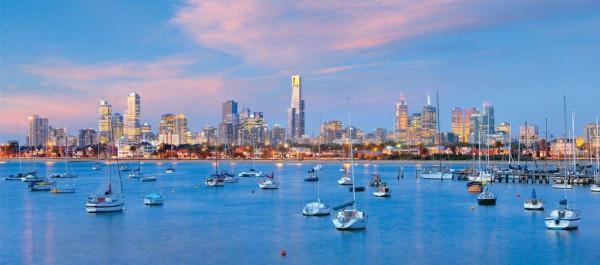As the state capital of Victoria and the largest city in Australia, it boasts a temperate oceanic climate, classified as Cfb in the Köppen climate classification.
The city’s weather patterns are well known for their unpredictability, owing to its unique geographical location. The temperature difference is most prevalent in the spring and summer months, leading to the formation of strong cold fronts.
These cold fronts can trigger severe weather, including gales, thunderstorms, hail, minor temperature drops, and heavy rain. Interestingly, Melbourne experiences little humidity during the summer, making it a perfect tropical getaway destination for those who prefer moderate weather conditions.
The winter, on the other hand, can be quite chilly, but the city’s unique climate ensures that it remains a lovely place to visit throughout the year.


